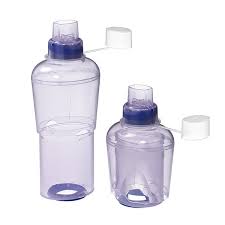The fabrics used in healthcare settings play an important supportive role in patient treatment and recovery. From patient gowns and linens to medical uniforms and specialized protective equipment, the textiles involved in healthcare require unique properties to function effectively and ensure safety. In this article, we will explore the fabric types commonly used, their key characteristics, and applications within medical facilities.
Woven vs. Nonwoven Fabrics
At the most basic level, Healthcare Fabrics are either woven or nonwoven. Woven fabrics like cotton or polyester are created by interlacing warp and weft threads at right angles on a loom. Nonwoven fabrics, on the other hand, use mechanical, thermal, or chemical bonding techniques to hold fibers together in a random web-like structure without weaving.
Each type has pros and cons for healthcare use. Woven fabrics generally have more durability and are suitable for reusable items like uniforms, linens, and drapes that require regular laundering. However, nonwovens are more economical for single-use products and those needing antimicrobial properties or fluid repellency like surgical gowns and drapes. Their lack of a formal weave structure also makes nonwovens more comfortable against skin.
fibers used also significantly impact performance. Common healthcare fabric fibers include cotton, polyester, nylon, and specialty fibers designed for specific medical applications.
Cotton’s breathability and softness give it widespread use for patient gowns and linens, but it’s absorbent nature makes it unsuitable for some needs. Polyester dries faster than cotton and maintains shape after washing but lacks the same soft, airy textures. Nylon provides durability yet retains moisture against the skin. Newer fibers continually emerge to address unmet needs.
Key Properties
Several critical properties must be considered when selecting fabrics for medical settings:
– Fluid Resistance: Many Healthcare fabrics are treated with repellent finishes to resist blood, bodily fluids, chemicals, and liquids. This reduces cross-contamination risks.
– Breathability: Fabrics contacting skin should allow air circulation to minimize overheating and maintain patient comfort levels.
– Absorbency: Absorbent materials are essential for wound care but not always desired elsewhere to prevent excess moisture retention.
– Durability: Items receiving frequent use and washing like uniforms require durable fibers that withstand repeated laundering without degrading.
– Antimicrobial Properties: Integrated antimicrobial chemicals or finishes provide an added level of safety against bacterial or viral growth on fabrics.
– Launderability: Most healthcare textiles need cleaning via industrial laundering involving high temperatures, chemicals, and mechanical action to thoroughly sanitize. Fabric durability impacts how many wash cycles items can withstand.
– Barrier Protection: Specialized impermeable fabrics form vital barriers protecting medical staff from hazardous materials during procedures.
Selecting the right balance of these properties according to intended use ensures fabrics safely and effectively support patient care and provider wellness. Let’s explore some common healthcare fabric applications in more detail.
Patient Gowns and Linens
Patient gowns, sheets, pillowcases, and other linens contacting skin require soft, comfortable materials. Cotton remains a staple but is blended increasingly with synthetic fibers for quicker drying and added durability through rigorous laundering cycles between patients.
Antimicrobial treatments impart additional hygienic protection and peace of mind. Disposable nonwoven gowns offer convenience but lack the airy breathability of reusable textiles. For higher acuity settings, enhanced fluid resistance and skin-compatibility become more important in linens. Overall, patient comfort and well-being direct gown and linen fabric selection.
Medical Uniforms
Protecting medical staff from contamination hazards necessitates durable, fluid-repellent uniform fabrics. Woven cotton/polyester blends maintain shape wash after wash while shedding liquids and bodily fluids. Some uniforms integrate antimicrobial technologies or specially-engineered fibers resistant to potentially infectious materials.
Care must be taken to select breathable materials permitting unrestricted movement during physically demanding tasks. Striking the right balance between protective functionality and comfort ensures health workers can focus fully on patient care tasks without excessive distraction from their garments. Professionalism also factors into uniform fabric choices.
Barrier Protection Fabrics
When exposure to hazardous drugs, chemicals, or airborne pathogens presents serious health risks, personal protective equipment forms a crucial barrier. Nonwoven and microporous breathable films manufactured to rigorous standards comprise necessary gowns, coveralls, masks, and sterile drapes.
Fabrics intended for surgical environments feature liquid barrier properties, high particulate filtration efficiencies, and antimicrobial properties embedded during production. Their breathability still allows unimpeded vision and dexterity under stressful emergency conditions. Innovation continuously improves barrier textiles to safeguard medical heroes on the frontlines.
Specialized Wound Care Products
From bandages to dressings to protective mattress covers, wound treatment demands purpose-driven textile solutions. Absorbent cotton, alginate-infused nonwovens, hydrocolloid polymer films, and other interactive materials gently cleanse injuries while promoting natural healing processes.
Antimicrobial yarns woven into protective underpads prevent soil pathogens from inflicting new harm. Breathable properties ward against over-moist environments conducive to infection. As medical science advances wound therapies, fabrics evolve apace with new active ingredients, moisture management attributes, and application methods optimized for patient outcomes.
Behind the scenes, carefully selected healthcare fabrics play a direct supporting role in patient recovery and staff protection. Understanding their material properties, applications, and needs within medical settings underscores why performance, hygiene, safety, and comfort remain top priorities in textile development. Continuous innovation will only enhance how essential fabrics impact health outcomes going forward.
*Note:
1. Source: Coherent Market Insights, Public sources, Desk research
2. We have leveraged AI tools to mine information and compile it



